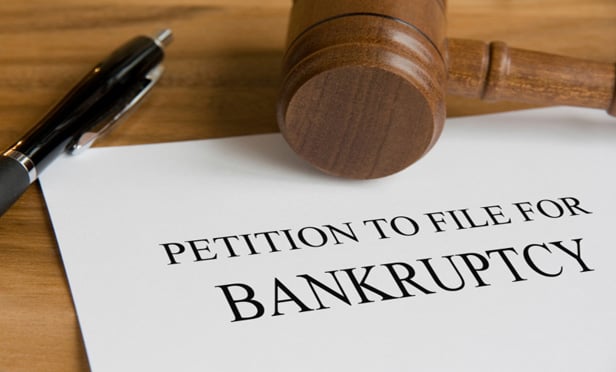Features

Circuit Split Reflects Disagreement About the Relationship Between Scheme Liability and SEC Rule 10b-5(b)
Historically, federal courts generally agreed that scheme liability under SEC Rule 10b-5(a) and (c) requires something more than a misstatement or omission — with misstatements and omissions typically being litigated under Rule 10b-5(b) instead. However, the SCOTUS in Lorenzo v. SEC held that an individual who disseminates a misstatement, without other fraudulent conduct, is potentially liable under the scheme liability provisions of Rule 10b-5. Subsequently, a circuit split has emerged over the scope of Lorenzo's holding.
Columns & Departments

Co-ops and Condominiums
Amendment of Bylaws Relieves Condominiums of Obligation to Use Association for Repair Services
Columns & Departments

IP News
Federal Circuit: Prosecution Laches Applies to Patent Claiming 1987 Priority Date Federal Circuit: Appellate Court Lacks Jurisdiction Over Interlocutory Appeal of Protective Order Dispute
Features

ESG 'Greenwashing' Litigation On the Rise
Increased attention paid to companies' public promotion of their environmental and sustainability programs is likely to continue in 2023, with further developments in regulation and litigation pertaining to "greenwashing" — a marketing practice which involves unsubstantiated or exaggerated claims about the environmentally friendly or socially-responsible attributes of an organization's products or services.
Features

Bankruptcy Veterans See Surge In Corporate Filings
Corporate bankruptcies have been a hot topic lately, with several businesses or their parent companies declaring bankruptcy, announcing they plan to do so or saying they may to do so soon. Two veteran bankruptcy attorneys in Georgia give their take on this and other bankruptcy topics.
Columns & Departments

Development
Invalid Condition on Special Permit Does Not Invalidate Permit Landmark Commission's Certificate of Appropriateness Upheld Area Variances Upheld Negative Declaration on Zoning Amendment Upheld BSA Misconstrued Curb Level Provision In Zoning Resolution
Columns & Departments

Real Property Law
Tax Deed Invalid for Inadequate Notice Mistaken Description In Foreclosure Action on Neighboring Parcel Does Not Affect Landowner's Parcel
Columns & Departments

Landlord & Tenant Law
Ambiguities Prevent Summary Judgment In Action on Guaranty
Columns & Departments

Co-ops and Condominiums
Unit Owner Failed to Establish Full Title As Surviving Joint Tenant Association Denied Summary Judgment In Unit Owner's Claim Of Improper Waiver of Dues
Columns & Departments

Eminent Domain Law
Claimant Not Entitled to Consequential Damages of Lack of Access
Need Help?
- Prefer an IP authenticated environment? Request a transition or call 800-756-8993.
- Need other assistance? email Customer Service or call 1-877-256-2472.
MOST POPULAR STORIES
- The 'Sophisticated Insured' DefenseA majority of courts consider the <i>contra proferentem</i> doctrine to be a pillar of insurance law. The doctrine requires ambiguous terms in an insurance policy to be construed against the insurer and in favor of coverage for the insured. A prominent rationale behind the doctrine is that insurance policies are usually standard-form contracts drafted entirely by insurers.Read More ›
- A Lawyer's System for Active ReadingActive reading comprises many daily tasks lawyers engage in, including highlighting, annotating, note taking, comparing and searching texts. It demands more than flipping or turning pages.Read More ›
- The Brave New World of Cybersecurity Due Diligence in Mergers and Acquisitions: Pitfalls and OpportunitiesLike poorly-behaved school children, new technologies and intellectual property (IP) are increasingly disrupting the M&A establishment. Cybersecurity has become the latest disruptive newcomer to the M&A party.Read More ›
- Abandoned and Unused Cables: A Hidden Liability Under the 2002 National Electric CodeIn an effort to minimize the release of toxic gasses from cables in the event of fire, the 2002 version of the National Electric Code ("NEC"), promulgated by the National Fire Protection Association, sets forth new guidelines requiring that abandoned cables must be removed from buildings unless they are located in metal raceways or tagged "For Future Use." While the NEC is not, in itself, binding law, most jurisdictions in the United States adopt the NEC by reference in their state or local building and fire codes. Thus, noncompliance with the recent NEC guidelines will likely mean that a building is in violation of a building or fire code. If so, the building owner may also be in breach of agreements with tenants and lenders and may be jeopardizing its fire insurance coverage. Even in jurisdictions where the 2002 NEC has not been adopted, it may be argued that the guidelines represent the standard of reasonable care and could result in tort liability for the landlord if toxic gasses from abandoned cables are emitted in a fire. With these potential liabilities in mind, this article discusses: 1) how to address the abandoned wires and cables currently located within the risers, ceilings and other areas of properties, and 2) additional considerations in the placement and removal of telecommunications cables going forward.Read More ›
- Guidance on Distributions As 'Disbursements' and U.S. Trustee FeesIn a recent case from the Bankruptcy Court for the District of Delaware, In re Paragon Offshore PLC, the bankruptcy court provided guidance on whether a post-plan effective date litigation trust's distributions constituted disbursements subject to the U.S. Trustee fee "tax."Read More ›
